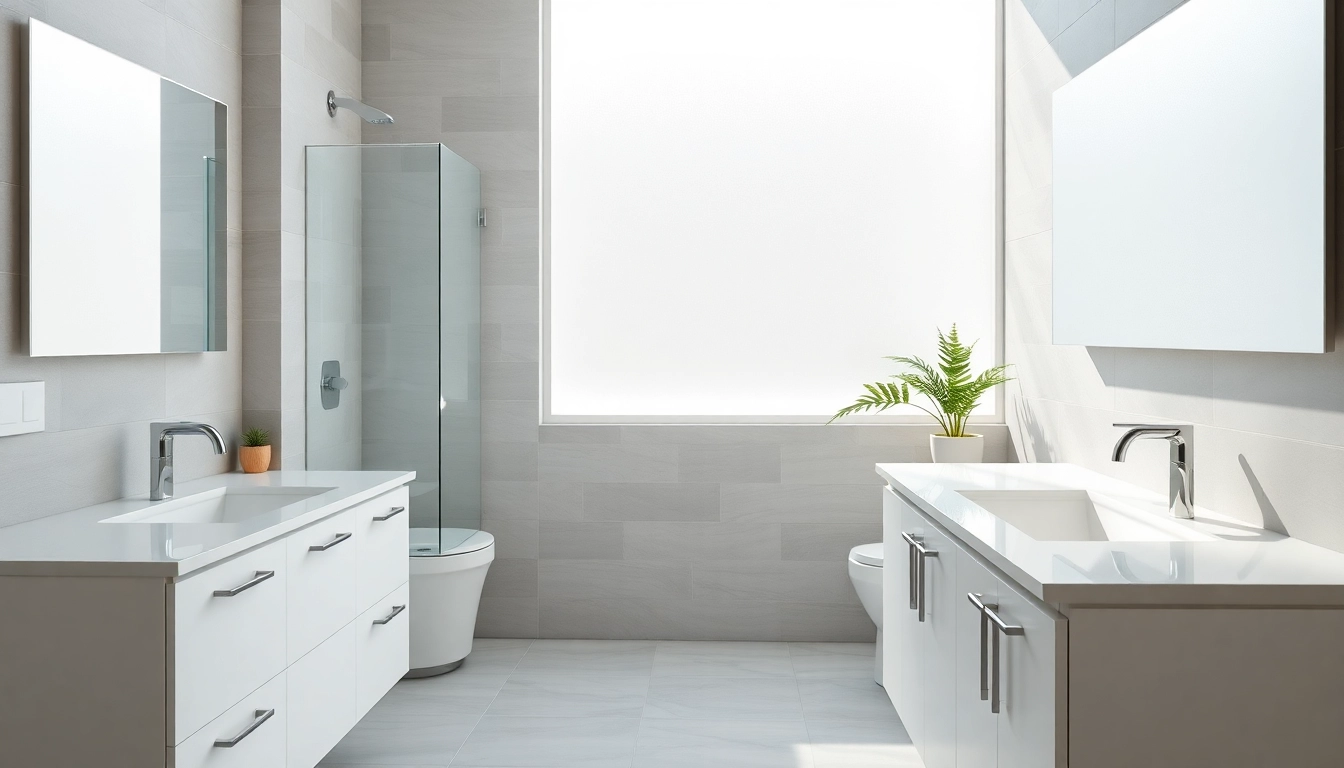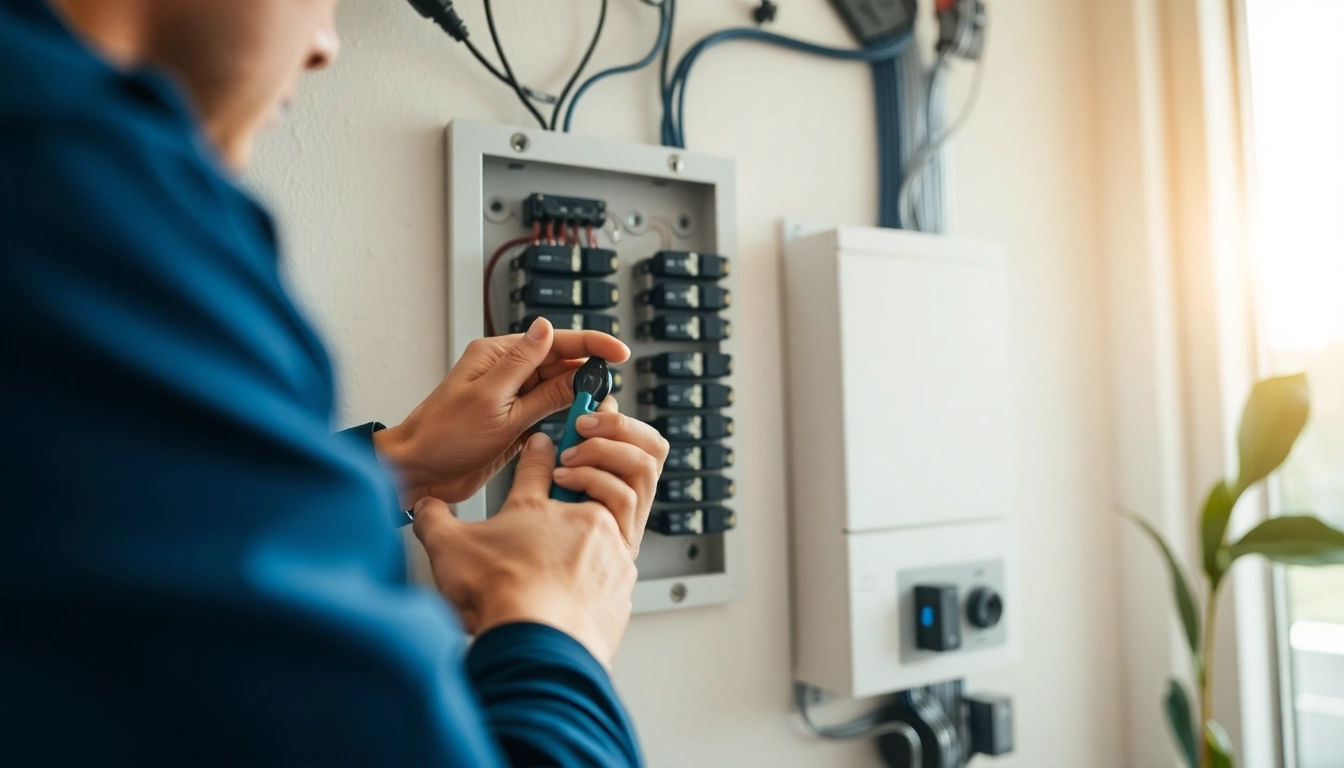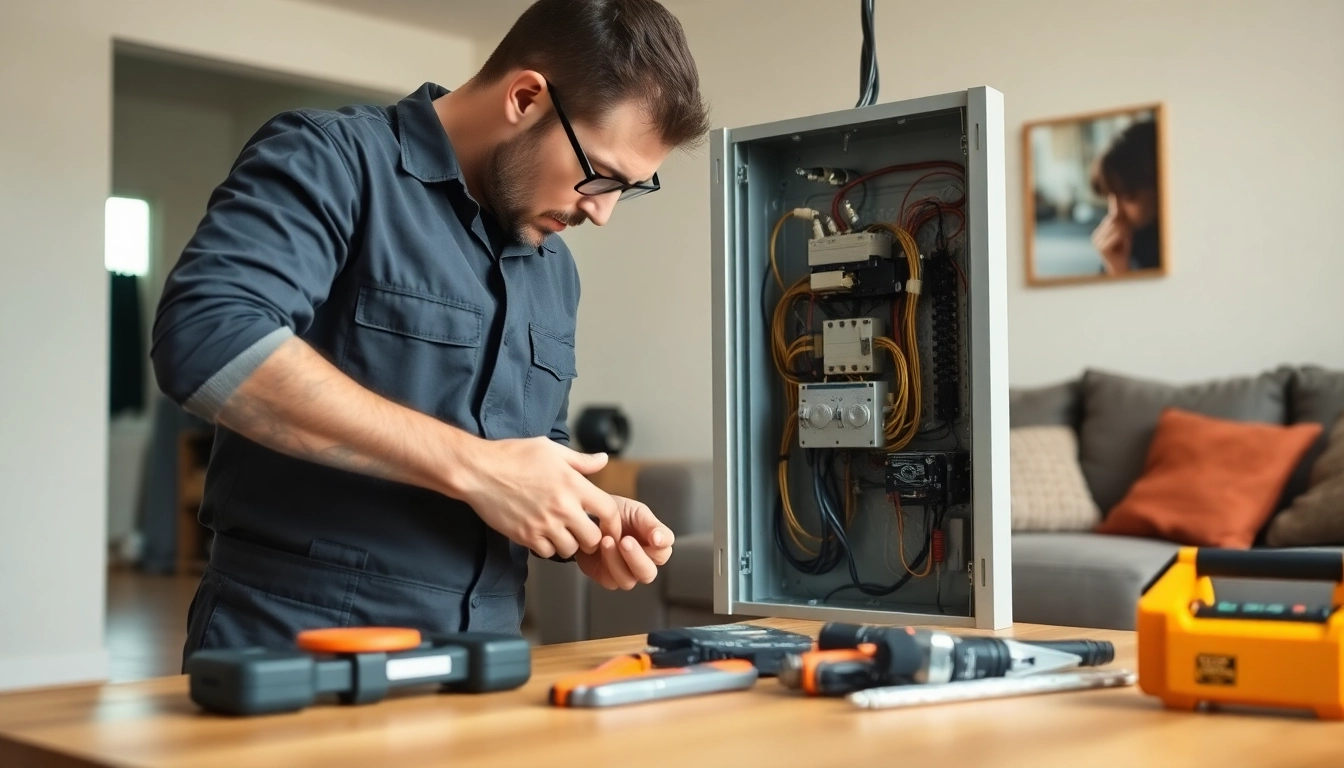Key Insights and Ideas for Successful Bathroom Remodels
Understanding Bathroom Remodels
What are Bathroom Remodels?
Bathroom remodels refer to the process of renovating or upgrading the features and aesthetics of a bathroom. This might include changing fixtures, improving the plumbing, updating tiles, or even completely reconfiguring the layout of the space. A bathroom remodel can vary significantly in scope—from minor cosmetic updates to extensive renovations that involve structural changes. Regardless of the scale, bathroom remodels are often a critical part of home improvement projects because they enhance functionality, boost property value, and create a more enjoyable living environment.
Common Reasons for Bathroom Remodels
As homeowners consider bathroom remodels, various motivations often drive their decision. Here are common reasons for embarking on this journey:
- Increased functionality: Many homeowners find that their bathrooms are too small or poorly designed for their needs. A remodel can optimize space and functionality.
- Updating outdated designs: Trends in home design evolve constantly, and what was once stylish may now seem antiquated. Many remodels aim to bring a space into alignment with current trends.
- Boosting resale value: Bathrooms are one of the most scrutinized rooms during home evaluations. A modern, stylish bathroom can significantly enhance a home’s marketability.
- Improving energy efficiency: Upgrading to energy-efficient fixtures can lower utility bills and reduce a home’s carbon footprint.
- Addressing damage or safety concerns: Plumbing issues, mold, or structural damage might necessitate a remodel to ensure safety and hygiene.
Factors Affecting Bathroom Remodels
Several factors can impact the outcome of a bathroom remodel, including:
- Budget: The allocated budget is a significant determinant of the scope of work. It affects design choices, materials, and whether to hire professionals.
- Space constraints: The existing layout and size of the bathroom limit the modifications that can be implemented.
- Local building codes: Regulations may dictate what can be done in a remodel, particularly concerning plumbing and electrical work.
- Timeframe: How quickly the remodel needs to be completed can influence material choices and whether a DIY approach or professional contractors are used.
- Personal style: Homeowners’ aesthetic preferences significantly shape the design choices and selections made during the remodel.
Planning Your Bathroom Remodel
Setting a Realistic Budget for Bathroom Remodels
Creating a realistic budget is the foundational step in any bathroom remodel. Understanding the costs associated with different types of upgrades helps homeowners plan accordingly. Here’s a basic breakdown of estimated costs:
- Minor remodels: Ranging from $2,500 to $8,000, these often include cosmetic changes such as repainting, new fixtures, and minor plumbing adjustments.
- Mid-range remodels: For more substantial updates, budgets between $10,000 and $20,000 often allow for new countertops, cabinetry, and improved plumbing.
- High-end remodels: Premium remodels may exceed $20,000 and typically involve custom designs, luxurious materials, and high-grade fixtures.
When budgeting, it’s crucial to account for unexpected expenses, often recommended to set aside 10-20% of the total budget for contingencies.
Choosing the Right Design and Layout
The design and layout of a bathroom should reflect both personal style and practical needs. Here are steps to ensure the right design choice:
- Assess the needs: Review what works and doesn’t work in the current space and make a list of desired features such as walk-in showers, double sinks, or additional storage.
- Explore design styles: Popular design themes include modern, contemporary, traditional, farmhouse, and minimalist. Browsing inspiration sources like Houzz or Pinterest can help clarify preferences.
- Consider usability: Ensure the layout allows for ease of movement, especially in smaller spaces. The placement of fixtures should enhance functionality.
- Consult professionals: Engaging with a designer or remodel professional can provide valuable insights into feasibility and emerging trends that align with the homeowner’s vision.
Important Permits and Regulations
Before embarking on a remodel, it’s essential to understand necessary permits and regulations that may apply. Here are a few key points:
- Local codes: Each municipality has specific regulations to ensure safety and compliance with building standards, especially concerning electrical and plumbing work.
- Permits: Some projects may require permits, which can involve submitting plans to local authorities. This process can add time and cost but ensures that the work meets all legal requirements.
- Homeowners’ associations (HOAs): If applicable, homeowners should review any rules or requirements set forth by their HOA to avoid conflicts with community standards.
Executing Your Bathroom Remodel
Demolition and Preparation Steps for Bathroom Remodels
Proper preparation can significantly affect the outcome of a bathroom remodel. Steps include:
- Clear the space: Remove all accessories, fixtures, and furniture not involved in the remodel.
- Shut off water: Before beginning demolition, ensure that the water supply is turned off to prevent leaks and manage any potential flooding.
- Demolition process: Depending on the extent of the remodel, this may involve removing tiles, fixtures, and old cabinetry. Safety gear and proper disposal methods should be used throughout.
- Inspect underlying issues: Once demolition is complete, inspect for any plumbing or electrical issues that need to be resolved before new installations.
Key Installations in Bathroom Remodels
The following are essential to consider when executing installations during a bathroom remodel:
- Plumbing fixtures: This includes sinks, toilets, and showers. Modern eco-friendly options can help save water while providing functionality.
- Cabinetry and countertops: Choose durable materials that match the overall design vision. Consider storage solutions that maximize the available space.
- Flooring: Options range from tiles to vinyl and must be chosen for aesthetic value, practicality, and water resistance.
- Lighting: Good lighting is essential for functionality and ambiance. Layering different types of lighting will enhance the overall experience.
- Ventilation: Installing or upgrading ventilation fans will help in managing moisture and keeping the area dry, preventing mold growth.
Common Mistakes to Avoid in Bathroom Remodels
Avoiding common pitfalls can help ensure the success of a bathroom remodel. Here are mistakes to steer clear of:
- Neglecting to plan: Failing to establish a clear plan can lead to a disorganized process, resulting in a longer remodel time and unexpected costs.
- Overlooking storage: Homeowners often concentrate on aesthetics and overlook practical storage solutions that effectively utilize the vertical space.
- Inadequuate lighting: A well-lit bathroom is paramount. Homeowners should consider ambient, accent, and task lighting for the best results.
- Going too trendy: While trendy options can be exciting, incorporating classic elements ensures the bathroom remains appealing even as trends evolve.
- DIYing complex tasks: While DIY can save money, some tasks— particularly plumbing and electrical work—are best left to professionals to avoid costly repairs later.
Bathroom Remodel Trends and Styles
Popular Bathroom Remodel Designs
Current bathroom trends lean toward styles that enhance both functionality and aesthetics. Here are some popular designs:
- Open-concept layouts: Bathrooms now increasingly feature open designs that merge seamlessly with adjacent spaces, creating a more expansive and airy feel.
- Floating vanities: These add a contemporary feel, making spaces appear larger while providing essential storage.
- Walk-in showers: Spacious walk-in or curbless showers offer a luxurious bathing experience, allowing for elegant tile designs and enhanced accessibility.
- Bold colors and patterns: Designers are breaking away from the traditional neutral palettes, focusing on vibrant colors and bold pattern combinations for tiles and fixtures.
- Natural materials: Organic materials, such as wood or stone, are becoming popular choices, aligning with the desire for eco-friendliness and a connection to nature.
Eco-Friendly Options in Bathroom Remodels
As sustainability becomes increasingly important to homeowners, here are eco-friendly options to consider:
- Low-flow fixtures: Installing low-flow toilets, faucets, and showerheads can greatly reduce water usage without sacrificing performance.
- Recycled materials: Using tiles or countertops made from recycled materials can minimize environmental impact while adding unique style to the space.
- Energy-efficient lighting: Switching to LED lighting not only enhances aesthetics but also cuts down on energy consumption.
- Sustainable materials: Opt for sustainably sourced wood for cabinetry or bamboo flooring, contributing to a greener overall design.
- Smart technology: Implementations like smart thermostats and leak detectors can enhance efficiency and reduce wasted resources.
Tile and Fixture Trends for Bathroom Remodels
Trends in tiles and fixtures can serve as powerful visual focal points in bathroom design. Consider the following:
- Large-format tiles: These can create a seamless look, minimizing grout lines and making spaces easier to clean while giving the illusion of larger expanses.
- Textured tiles: Incorporating textured tiles can add depth and interest, providing contrast to smoother surfaces.
- Vintage fixtures: Retro designs are making a comeback, with homeowners opting for vintage-inspired faucets and bath fixtures to create a unique aesthetic.
- Bold backsplashes: Eye-catching backsplashes behind sinks and mirrors are trending as a way to express personal style and add visual drama.
After Your Bathroom Remodel: Maintenance and Care
Maintaining Your Newly Remodeled Bathroom
Once the remodel is complete, regular maintenance helps ensure the longevity and cleanliness of the space. Consider the following best practices:
- Regular Cleaning: Maintain a cleaning schedule to discourage mold, mildew, and mineral buildup, particularly in shower areas and around faucets.
- Inspect for leaks: Periodically check plumbing fixtures and joints for leaks to avoid water damage and costly repairs.
- Maintain ventilation: Ensure that exhaust fans are functioning properly to promote air circulation, which helps reduce moisture levels.
- Touch Up Paint: Perform regular touch-ups on painted surfaces to maintain a fresh appearance and protect against deterioration from humidity.
Seasonal Care Tips for Bathroom Remodels
Bathroom care can vary with the seasons; here are some seasonal tips to consider:
- Winter: Ensure heating elements are in good condition to prevent pipes from freezing; check insulation around plumbing.
- Spring: Conduct a thorough deep cleaning to remove accumulated grime and to prepare for warmer temperatures.
- Summer: Keep an eye on ventilation, ensuring fans and windows are providing proper airflow during the humid months.
- Fall: Inspect for any signs of water damage or leaks, and make necessary repairs before winter.
Long-Term Benefits of Well-Planned Bathroom Remodels
A well-executed bathroom remodel offers numerous long-term benefits, including:
- Increased home value: A modern, well-maintained bathroom can significantly increase a home’s market value, attracting potential buyers.
- Enhanced comfort and functionality: A bathroom that meets a homeowner’s needs contributes to an overall improved daily routine and greater satisfaction.
- Energy savings: When energy-efficient fixtures and materials are implemented, homeowners can enjoy reduced utility bills over time.
- Safety improvements: Addressing potential hazards during the remodel—such as replacing old plumbing or installing slip-resistant flooring—enhances safety for all users.














Post Comment